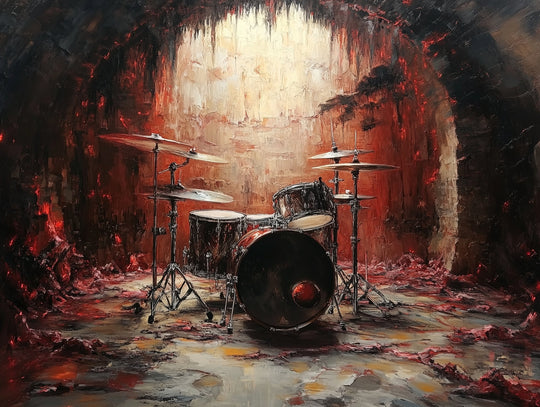10 Essential Tips for Crafting Perfect MIDI Drum Patterns
10 Essential Tips for Crafting Perfect MIDI Drum Patterns
Blog Article
MIDI drum designs are in the primary of contemporary audio production. They let musicians and makers to generate dynamic, functional defeats that drive a track's rhythm. Whether you're a beginner or a veteran producer, understanding the fundamentals of fabricating drum midi packs can elevate your music creation skills. This manual covers everything you need to know—from basic ideas to sophisticated techniques—to art powerful drum designs designed to your music.
What Are MIDI Drum Habits?
MIDI (Musical Tool Electronic Interface) drum styles are electronically created sequences of drum beats programmed in a DAW (Digital Music Workstation). Unlike recorded music, MIDI data contains information regarding the time, pitch, speed, and length of notes, providing total get a grip on around every part of the beat.
With MIDI, companies may test out countless drum products, tune rhythms, and coating appears to generate defeats for types including hip-hop to electronic to rock. The usefulness of MIDI causes it to be an essential software for audio production.

The Creating Blocks of a Drum Design
Creating a good MIDI drum structure begins with knowledge the aspects of a drum kit and their jobs in shaping flow:
Stop Drum: Forms the inspiration of the beat. It gives the thud or low-end strike that drives the rhythm.
Snare Drum:Brings energy and emphasis, usually creating the snap noise heard on the next and 4th beats in several genres.
Hi-Hats: These come in two forms (closed and open) and put dance and difference with consistent patterns.
Toms: Complete changes or include makeup to your patterns.
Crash and Drive Cymbals: Used for features and to level transitions within a song.
Measures to Create MIDI Drum Patterns
Step 1: Focus on a Fundamental Structure
Lay down a straightforward 4/4 beat. Work with a end drum on defeats 1 and 3 and a snare on defeats 2 and 4. Put regular hi-hats on every eighth notice to keep the flow moving. That establishes a powerful foundation.
Stage 2: Put Difficulty
When your basic beat is set up, present variation. Add offbeat hi-hat hits, ghost notes on the snare, or syncopation to make a rhythm that thinks living and engaging.
Step 3: Give attention to Velocity and Humanization
One popular trouble with MIDI drum habits is that they'll noise robotic if every observe is performed at exactly the same velocity. Alter velocities to mimic the character of an actual drummer's performance. Additionally, experiment with slight time shifts to humanize the rhythm.
Stage 4: Integrate Floods and Changes
Drum fills are important for observing transitions between song sections. Use tom rolls, snare floods, or cymbal crashes to incorporate enjoyment and motion to your patterns, maintaining fans engaged.

Step 5: Experiment with Styles
Examine different styles to expand your comprehension of drum patterns. Hip-hop defeats may possibly feature swung hi-hats and syncopated shoes, while electric audio usually engages complicated grid-based programming and split percussion.
Techniques for Elevating Your Defeats
Coating Your Sounds: Mix samples or drum sounds to generate larger, more bumpy beats.
Use Results Beautifully: Add reverb, wait, or compression to personal drum elements for a far more refined sound.
Study Actual Drummers: Analyze drum performances in your favorite songs to comprehend dance and beat habits better.
Discover Endless Creativity with MIDI
Learning MIDI drum styles enables you to innovate and modify defeats to generally meet the needs of any track. By blending specialized precision with creative testing, you can hobby rhythms that push your music and leave a lasting impact. Start exploring today and touch to the boundless opportunities of MIDI for your drum production.
Report this page